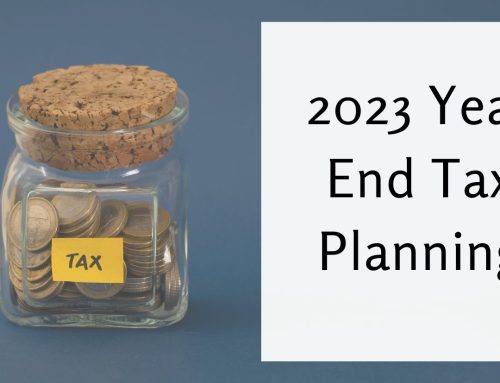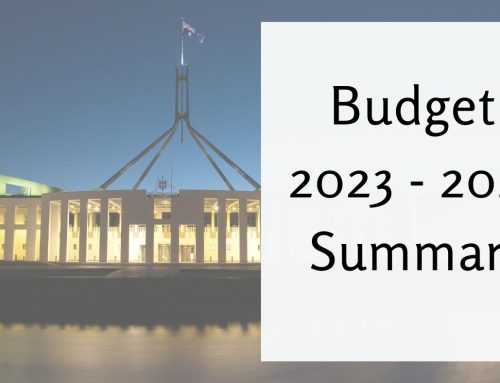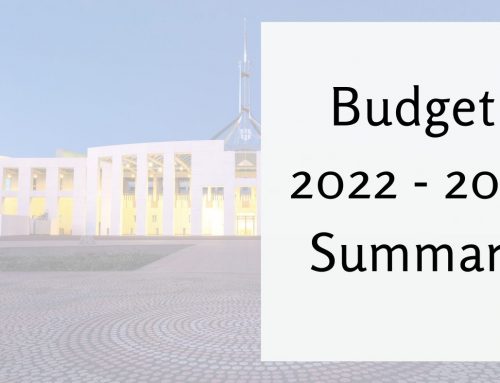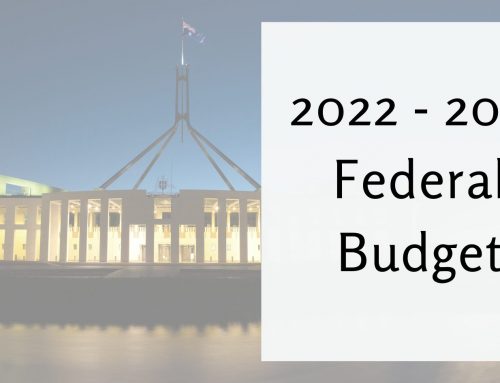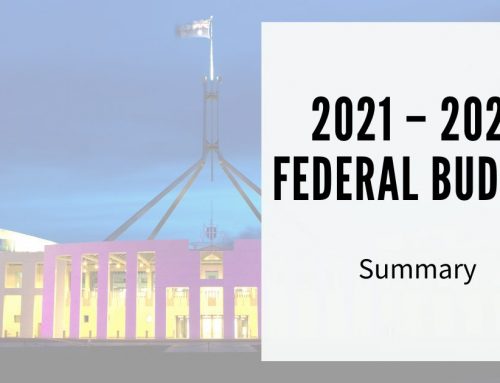Over the past 7 months Parliament has passed the most significant superannuation reforms since 2007 with many of the reforms taking effect from 1 July 2017. The following is a summary of the various reform measures together with an explanation of how they work. This newsletter is for information only and should not be construed to be the provision of personal advice. If you have not yet made an appointment to meet with us to discuss your superannuation and how the reforms will impact you we would urge you to contact our office to arrange a convenient time to meet.
$1.6m Transfer Balance Cap (TBC)
The Transfer Balance Cap (TBC) has been introduced to restrict the 0% tax rate applicable to earnings and capital growth on assets that have been used to support retirement income streams. The TBC of $1.6m comes into effect on 1 July 2017. This means that any person with $1.6m or more in superannuation must act now to ensure that they will not exceed their TBC from 1 July 2017. Once a person enters retirement phase they will have a Transfer Balance Account (TBA). That is, a person will have a TBA at the later of 1 July 2017, [if they currently derive a full Account Based Pension (ABP) or defined benefit pension] and when a superannuation income stream is first commenced. The person’s TBA information will be maintained by the Australian Taxation Office (ATO) based on information provided to the ATO by your superannuation fund administrator. If your TBC has been exceeded by less than $100,000 as at 1 July 2017 then you have up to 31st December 2017 to remove the excess from your TBA without penalty. If you have exceeded your TBC by more than $100,000 on 1 July 2017 then you will need to remove any TBA excess from the retirement phase and pay an excess transfer balance tax. You are able to rectify the TBC by either transferring the excess back to accumulation mode within the Fund or by withdrawing the excess balance from your superannuation fund.
The TBC only applies to those persons who are “retirement phase recipients”. In essence, this means that the TBC applies to those persons who are drawing an income stream from the superannuation entitlements after having satisfied a Condition of Release with no cashing restrictions. Typically, the most common Conditions of Release with no cashing restrictions that a superannuation member is likely to satisfy to have full access to their superannuation benefits are: permanently retiring from the workforce after attaining the preservation age; or attaining the age of 65 years of age. Important to note that a recipient of a Transition to Retirement Income Stream (TRIS) is not considered to be a “retirement phase recipient”.
It is important to note that the TBC is a one-off test for all but defined benefit pensions. For a person who has an ABP they will be tested against the TBC when they first commence the pension or 1 July 2017 if there is an existing ABP. Once tested against the TBC, you will not be tested again on that income stream unless there is a commutation of the income stream. For example, assume that at 1 July 2017 you have $2.0m in superannuation, you will elect to be tested against the TBC for an amount of $1.6m (i.e. you will fully utilise your TBC) with the remaining $400,000 being transferred to an accumulation account within the Fund. After 5 years the balance of your retirement phase income stream which was tested against your TBC is now $2.0m. The growth in the value of the pension account does not cause you to have an excess TBA as any growth is ignored for the purposes of the TBC and TBA. Similarly, if the value of the pension account dropped from $1.6m to $1.2m you could not top up the pension back to your $1.6m cap because you have already fully utilised your TBC.
In terms of the TBC, the things that you should be thinking of before 30 June 2017 are:
- If you are above $1.6m, you will need to act now to ensure that you have a minute or a resolution in place before 1 July stating that you elect to have $1.6m of your balance to remain in retirement phase, with any excess to be immediately transferred to an accumulation account within the Fund.
- If you are above $1.6m and you have multiple accounts then you should consider which accounts should be used to form the $1.6m TBC and which balances should form your accumulation benefits. That is, do the accounts with a greater tax-free percentage form part of your retirement phase pension or your accumulation account
- If you have the ability to utilise non-concessional (after-tax) contributions, should you withdraw an amount from an account with the highest taxable component and recontribute this amount as a non-concessional contribution so as to increase your tax-free components within the Fund. This is usually about estate planning more than anything else.
- For couples, if one member is above the TBC and one member is below the TBC, should the person with the higher balance withdraw an amount and have their partner recontribute that amount as a non-concessional contribution
Total Superannuation Balance (TSB)
With effect from 1 July 2017, a person will be restricted from making non-concessional contributions to superannuation where their Total Superannuation Balance (TSB) is $1.6m or greater. Therefore, when considering making non-concessional contributions after 30 June 2017, it will be important to ensure that your TBS is below $1.6m. For most the calculation will be straight forward but there are technical issues that will impact some superannuation members.
For those who are in accumulation mode and will be for the next few years and who are under the TSB cap of $1.6m, it will become increasingly more important to seek advice and plan the timing of any non-concessional contributions as there maybe the ability to contribute more than the $1.6m TSB cap.
Transition to Retirement Income Streams (TRIS)
From 1 July 2017, any person drawing an income stream from their superannuation benefits using a TRIS will need to re-assess whether the TRIS should be continued or whether the TRIS should be commuted.
Under current legislation the attraction of commencing a TRIS for those who were between their preservation age and 60 was that the income and capital growth derived from the assets that were used to support the TRIS was exempt from tax within the superannuation fund. Where there was an overall tax benefit from commencing the TRIS (i.e. after taking into account the Fund’s tax saving compared to the net tax position of the individual who had to include all or part of the income stream in their taxable income and the benefits of salary sacrificing additional employer contributions) the member would commence the TRIS. For persons aged 60 or over, it was a “no-brainer” given that the income stream from the TRIS was non-assessable, tax exempt income in the hands of the recipient. The TRIS for someone aged 60 or over meant that they could salary sacrifice to maximise their annual concessional cap and minimise not only their personal income tax position but also minimise the tax payable within the Fund.
With effect from 1 July 2017, a TRIS will not be considered to be part of the retirement phase which means that the income and capital growth attributable to the assets that are used to support the TRIS will now be taxed at 15% (as opposed to 0%). While the taxation benefits have been removed within the superannuation environment a TRIS can still provide a tax benefit for someone who is 60 or over and who has the ability to salary sacrifice more into superannuation where their individual tax rate on that salary sacrifice amount is greater than 15%. Hence, not all TRISs should be commuted, but from 1 July any TRIS should be reviewed to assess whether or not there is a net benefit to the member receiving the TRIS.
Finally, as a TRIS is not considered to be a retirement phase income stream, therefore a TRIS will not cause you to be tested against your $1.6m TBC.
Concessional Contributions
Despite the fact that the overall objective of superannuation is to increase the number of financially self-sufficient retirees and reduce the demands on welfare through the Age pension, the Government has seen fit to reduce the ability of individuals to make concessional (deductible) contributions to superannuation. With effect from 1 July 2017, the concessional cap will be reduced to $25,000 per annum. While this amount will be indexed the actual concessional cap will only be increased after the indexation has reached an increment of $2,500.
The current concessional cap is age based as is as follows, to 30 June 2017:
- Aged 48 or under as at 30 June 2016 $30,000
- Aged 49 or over as at 30 June 2016 $35,000
If you have a salary sacrifice arrangement in place at present, you should take action now to ensure that you (if self-employed) or your employer will adjust the salary sacrifice amount to align with the reduced $25,000 annual concessional cap that will be applicable for the 2017-18 financial year.
Non Concessional Contributions (NCC)
With effect from 1 July 2017,the annual NCC cap will be $100,000 (being 4 times the concessional cap). However, as stated earlier, where your Total Superannuation Balance (TSB) exceeds the cap of $1.6m, you will no longer be eligible to make any further NCC. If you are under the age of 65 and have a TSB of less than $1.6m as at 30 June the previous tax year,you will be able to make further NCC. Your TSB as at 30 June the previous tax year will also determine whether or not you may be able to utilise the “bring forward” rule. The “bring forward” rule essentially allows a person to make up to 3 years of NCC in a single year. From 1 July 2017 the bring forward rule will apply as follows:

Between now and 30 June 2017, you have the ability to plan and potentially make a final NCC. As such, the NCC caps applicable for the year ended 30 June 2017 are as follows:
There are also transitional rules where an individual may have invoked the bring forward rule during the 2016 or 2017 financial year but who have not fully utilised the maximum NCC by 30 June 2017. Under the transitional rules for the 2018 and 2019 financial years the available bring forward caps (where the bring forward amount was not fully contributed by 30 June 2017) will be reduced to $460,000 and $380,000 respectively. Once again, it will be extremely important to liaise closely with us to ensure that there are no excess NCC made during the transitional years.
Further, it is important to note the following:
Structured settlements are excluded from the definition of NCC
Small Business CGT contributions do not form part of a person’s NCC
Government announced in the 2017 May Budget that persons aged 65 and over who sell their principal residence on or after 1 July 2018 will be eligible to make a contribution to their superannuation fund of up to $300,000 per person. This also will not be a NCC.
In terms of planning you need to be considering the following:
Ability to make NCC prior to 30 June 2017 (could be part of a withdrawal and recontribution strategy)
What your TSB is as at 30 June the previous tax year before making any NCC
Who should be making the NCC (you or partner/spouse) having regard to the $1.6m TBC
Timing of NCC should you be contemplating the sale of a business where you would be able to take advantage of the Small Business CGT concessions to get further money into the Fund
Reversionary Pensions and the $1.6m TBC
The introduction of the TBC together with the interaction of the TSB rules presents a difficulty for couples where their combined superannuation entitlements will be greater than $1.6m. Assume that Mrs and Mr Jones have $1.0m each in superannuation and they have each commenced a retirement phase pension and been tested against their respective TBC. At this point we have no issue as they are both below their TBC. Five years on and their balances have grown to $1.2m each and Mr Jones dies. Ignoring indexation of the TSB and the TBC, if the ABP of Mr Jones is not reversionary to Mrs Jones, Mrs Jones will only be able to retain $400,000 of Mr Jones’ superannuation entitlements within the superannuation environment because she will be subject to the TSB of $1.6m. This means that $800,000 would have to be paid out of the Fund (out of the superannuation environment altogether) and invested in Mrs Jones own name whereby she would be taxed on the income at her personal marginal tax rates.
In contrast, if Mr Jones’ had a reversionary ABP, Mrs Jones could fully commute her ABP and place her $1.2m balance back into accumulation phase (still within the super environment). She could then take all of Mr Jones account based reversionary pension and have the reversionary pension tested against her TBC. She would then allocate a further amount from her accumulation balance back to commence a second pension. The amount that would be used to commence this second pension would be the difference between the value of Mr Jones’ reversionary ABP and the remaining TBC available to Mrs Jones.
We acknowledge that these new rules are complex and there is a greater need for planning at various stages of the life cycle of your superannuation entitlements. This is why it is becoming increasingly important for you to keep us up-to-date with your circumstances.
These rules are complex and require consideration based on your personal financial position. While we have just over a month before the rules take effect, there is still time to plan and put in place strategies that will provide long term tax savings for you, your partner (if applicable), and the beneficiaries of your estate.
We look forward to having the opportunity of discussing the superannuation reforms with you and setting in place strategies that will be of lasting benefit.

